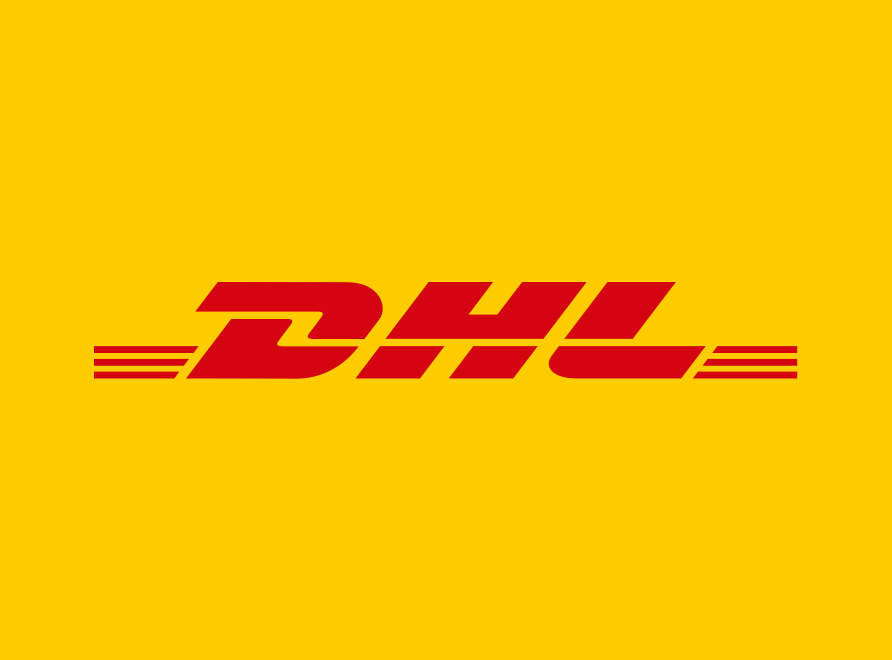How to Organise Your Self Storage Unit for Easy Access
.jpg)
How to Organise Your Self Storage Unit
For efficient self storage, organization is key! Here are some useful tips to help you manage your unit:
- Label and categorize each box.
- Put frequently used items at the front and eye level.
- Stack boxes and use shelving units to use vertical space.
- Wrap delicate items in bubble wrap or packing paper.
- Make an inventory list for tracking.
Divide the unit into sections - that way, you can group and find items quickly. Here are some other ideas:
- Make sure the labels are clear and visible from all angles.
- Create an aisle in the middle for easy access.
- Keep the storage space tidy for when you need to locate items.
Categorisation of Items
To organise your self-storage unit for easy access, in the UK, you must categorise your items efficiently. This includes sorting out items based on usage and frequency and grouping similar items together. By doing this, you can make the most of your storage space and quickly locate what you need when you need it.Sort out items based on usage and frequency
Organize items to be more efficient and effective! Firstly, identify the items you use most often, then arrange them in an easily accessible spot. Less-used items can be placed further away.
- Group items based on their use.
- Label each group for clarity.
- Put them in easy-to-reach places.
Ergonomics, safety, and layout should be taken into account. A well-arranged workspace can reduce stress, save time and boost productivity. It'll help you work quickly and confidently, without worrying about missing something vital. Make sure your workspace is organized to maximize performance!
Group similar items together
Grouping similar items is a must for successful information organization and retrieval. This way you can keep an eye on them, leading to better productivity and efficiency.
Categorizing by size (small, medium, large), color (red, green, blue) or type (shoes, shirts, pants) can be helpful. Remember to pick categories that make sense, like avoiding grouping shoes by color if you need a particular shoe type like boots or sneakers.
Pro Tip: Use descriptive labels and avoid words like "miscellaneous".
Maximising Space
To optimise the space in your self-storage unit and locate items effortlessly, utilise vertical space, use stackable storage containers, and place frequently accessed objects in the front. While maximising the room, these tips will help you easily identify and access the things you need.Utilise vertical space
Maximizing space? Don't forget the vertical dimension! Instead of just relying on floor and surface areas, make use of the airspace above. Tall shelves, cabinets and hanging organizers are a great way to save floor space and store lots of stuff.
Measure the height of the room and choose furniture that reaches up to the ceiling. Use stacking boxes or bins for items you don't need often. Hanging organizers like hooks and pouches work well in any unutilized wall space.
Install overhead lighting fixtures like recessed lights or pendant lamps to free up surface area and create a brighter atmosphere. Don't forget corners - corner shelving units or tables are great for decorative pieces without taking up too much space.
Safety is always important when using vertical spaces. Secure furniture against tipping over and don't put heavy stuff in high locations.
A mom with two kids under three was feeling overwhelmed by their cluttered playroom. She installed tall shelves along one wall and created an organized, calm area. This allowed for larger items like ride-on cars to be stored vertically without sacrificing floor-space.
Use stackable storage containers
For optimized storage space, stackable containers are a great solution! These portable boxes come in multiple sizes and materials. Here are a few benefits:
- Saving floor space by storing more items in less area.
- Organizing and easily accessing belongings. Label each container or use see-through ones to view inside.
- Easily transportable - fitting into cars and trucks.
- Eco-friendly - reusable and reduce single-use packaging.
- Color-coded items - matching boxes to purpose, room, etc.
- Protected from dust & moisture.
A friend of mine used stackable boxes to reorganize her whole apartment. She stored seasonal clothes in colorful bins stacked on top of each other, creating more floor space & stress-free mornings . Invest in stackable containers for efficient space and organization.
Place frequently accessed items at the front
Organize items you use often for the best use of your space. Here are 5 tips to help:
- Put the stuff you use most near the front .
- Group like items together , e.g. baking or cleaning products.
- Get drawer dividers and special cupboard organizers .
- Use vertical shelf or wall space for big things like pans or chairs.
- Check what you actually use and clear out any seldom-used items .
Reorganize regularly as your needs change. These methods can help you save space in any room. Make living spaces less cluttered by giving them a try today. Get the most out of your area with an optimized and organized living space.
Labelling
To organise your self storage unit for easy access with Labelling, you need to Label items for easy identification and Use a labelling system that works for you. This section will explain the importance of labelling in making your self-storage unit user-friendly. Explore the sub-sections to discover efficient and functional labelling techniques that will help you locate your stored items quickly and effortlessly.Label items for easy identification
Labeling your belongings is a must if you want to easily identify them. Here's what to consider:
- Choose a clear and readable font .
- Include key info such as contents, date, or owner's name .
- Securely attach the labels to avoid damage or falling off.
Also, your labels must be accurate. Don't make them confusing or misleading. Plus, if some items require special handling, indicate that too!
Begin labeling your items now! It will save you time and energy if something goes missing.
Use a labelling system that works for you
For successful labelling, personalize it to fit your work and habits. Adhere to a consistent language, format and categorization. Flexibility is key to make it practical as changes occur.
To maximize, personalize, stay consistent and be flexible . Studies show this can reduce errors by up to 84% ! (Source: BMJ Quality & Safety Journal).
Climate Control
To ensure that your items remain protected from the impact of humidity and temperature, you need to understand the significance of climate control in self-storage units. With this section on climate control in 'How to Organise Your Self Storage Unit for Easy Access, in the UK,' you can consider the impact of humidity and temperature, and use climate-controlled units for sensitive items.Consider the impact of humidity and temperature
Temperature and humidity levels are essential to manage an environment successfully. Failing to consider these factors can affect productivity, damage equipment, and harm user health. Controlling and monitoring temperature and humidity precisely is necessary in industries that handle delicate materials or processes. This helps maintain a stable environment, which increases efficiency and secures performance.
When thinking about climate control, there are several points to consider:
- Discovering your needs is critical. Different industries and facilities will need different levels of accuracy when controlling temperature and humidity. Choosing the right HVAC system can make sure predetermined targets are hit with little difference.
- Maintenance checks on HVAC units must be done regularly due to typical wear-and-tear from usage.
Not only industrial settings require consistent temperature-controlled environments. Offices can benefit from a well-maintained HVAC unit. The human body works better in temperate conditions, so controlled work environments make workers happier.
A paper mill in Maine lost humidity in 2019. This caused paper stock problems - too little moisture made paper jams during production runs. This affected over 200 employees, and the plant had to shut down for technical teams to fix it. This cost the company thousands in downtime fees and production losses. Such scenarios can happen to many industries if they don't prepare for environmental changes with reliable solutions like an HVAC system or a weather station. This way, companies can take preventive steps based on scientific data and insights and avoid losses.
Use climate-controlled units for sensitive items
When storing fragile items, external factors should be considered. Controlled-climate units regulate temperature and humidity, reducing the chance of damage - especially for long-term storage of delicate items like artwork and electronics.
Traditional units may save on costs, but don't offer the same protection against damage from elements. Controlled-climate units prevent mold, corrosion , and other deterioration that can ruin your belongings. Even if the items appear okay, external factors can still cause harm.
Climate-controlled units aren't only useful for valuable possessions - everyday items like clothes and furniture can benefit too. Regular units don't protect against dampness which can cause odors or stains.
A client once stored artwork without climate-control. Weeks later, they found visible signs of degradation that were unsalvageable. This mistake could have been avoided with secure storage.
In conclusion, climate-controlled units provide peace-of-mind and long-term preservation of sensitive items. The added cost per month is worth it versus allowing belongings to succumb to environmental factors.
Security
To ensure that your valuable items are safe and secure, you need to consider the security aspect when organising your self-storage unit for easy access in the UK. With the sub-sections of ‘Secure your unit with a high-quality lock’ and ‘Choose a storage facility with 24/7 surveillance,’ you can rest assured that your belongings are well-protected against theft or damage.Secure your unit with a high-quality lock
For optimal safety and security of your unit, you need an excellent locking system. Investing in a superior lock safeguards your property against intruders and theft. Here's a 3-step guide to help you with that:
- Evaluate the security level needed for your unit. Factors include the type of door/window, the location of the property, and neighbourhood crime rate.
- Pick a reliable and tough locking device that meets your requirements. Mortise locks, deadbolts, padlocks, and digital locks are some examples.
- Hire a professional locksmith to install the lock properly. They must adhere to industry standards and manufacturer's instructions.
Don't rely on makeshift methods like hiding spare keys under doormats or flower pots as they could attract burglars.
Pro Tip: Placing an alarm system with a high-quality lock gives extra protection.
Choose a storage facility with 24/7 surveillance
Go for a Storage Facility with Continuous Surveillance!
Six reasons why you should choose one:
- Burglary prevention with 24/7 surveillance .
- Remote access & control of the system.
- Alert notifications to security team & authorities.
- Evidence collection from recorded footage.
- Employee screening & monitoring .
- Compliance with industry regulations .
Choose a storage facility that meets strict rules & regulations for optimal security of your belongings.
Did you know? According to Statista, US self-storage units market generated $40 billion in 2020!
Maintenance
To maintain your self-storage unit for easy access, regularly inspect it and keep it clean and tidy. This will ensure that your belongings are well-preserved and easily accessible whenever needed. In this section, we will show you how to keep your storage unit in optimal condition. There are two essential sub-sections to consider which are regularly inspecting your storage unit and keeping it clean and tidy.Regularly inspect your storage unit
Conducting regular inspections of your storage unit is essential for its maintenance. Inspecting your storage unit often can help you spot any potential problems before they become major issues, and therefore save you money. Here are 6 steps for an effective inspection:
- Search for signs of water damage or leaks.
- Examine the walls and ceilings for cracks, holes or any other damage that could threaten the safety of the unit.
- Look for signs of pests like droppings or chewed objects, especially near entry points like doors and windows.
- Ensure that all locks are functional and secure.
- Check each item in the unit for any signs of damage or dirt, particularly if food, fabrics and artwork are stored.
- Log your inspection findings for future reference.
In addition to offering peace of mind, regular inspections can also keep the unit clean and organized. Make sure to pay attention to special features like air conditioning systems or humidity control. Also, note any maintenance instructions given by the storage facility staff.
To safeguard your stored items, consider these tips:
- Use shelving for larger items and free up floor space.
- Monitor temperature and humidity changes.
- Inspect appliances yearly before placing them in storage.
- Select appropriate packing materials to protect from dust and moisture.
By following these guidelines for regular inspections and smart suggestions, you can protect your storage investment and keep your supplies safe from harm.
Keep it clean and tidy
Cleanliness and tidiness are key to keep belongings in good condition. A methodical approach to cleaning will give a healthy and tranquil atmosphere. Here's a 4-Step Guide to keep your possessions neat:
- Work out crucial items and remove extra mess.
- Put frequently used items in designated spots and use storage systems like drawers or cabinets.
- Arrange belongings based on size, colour or kind , for instance.
- Clean surfaces with the right cleaning supplies regularly.
Also, clean light switches, knobs and handles with disinfectant to prevent germs from spreading.
For decent maintenance, remember to dust and vacuum often . Keep floors as clear as possible. Put covers on furniture or carpets to stop staining.
Simple tips such as putting a bin nearby can stop littering or choosing washable items in the home can help with regular cleaning, leading to a neat environment that boosts physical and mental health.
Tips for Easy Access in the UK
To ensure easy and efficient access to your self-storage unit in the UK, use weather-appropriate clothing and footwear, check facility timings before visiting, and plan your route to avoid traffic. These sub-sections offer practical solutions to make your journey to your self-storage unit hassle-free.Use weather-appropriate clothing and footwear
Traveling to the UK? Dress right for the weather! Wear waterproof clothing and footwear, layer up for cold days, and protect yourself from the sun with hats and sunglasses. To stay ahead of the game, check out daily forecasts.
And here's a fun fact: the UK has over 60 different kinds of sheep! Scottish Blackface, North Country Cheviot, Welsh Mountain Sheep ...the list goes on.
Check facility timings before visiting
It's essential to plan your trip ahead of time for a pleasant experience. Confirm operating hours before setting off on your journey. Otherwise, you may get disappointed, delayed, or have your plans canceled.
- Verify the timings prior to arriving
- Be aware of seasonal or special events that can change hours
- Make sure to double-check for holidays like Easter or Christmas
Some facilities alter their hours on specific days or for a limited period. Failing to understand this could mean missing out on something during your stay.
I once overlooked checking facility timings and arrived at a museum just when it was closing. Don't make the same mistake - plan ahead!
Plan your route to avoid traffic
Strategize your travel path to ensure a hassle-free journey! Here are four steps to follow:
- Before leaving home, review the route and timing. Check traffic alerts on GPS or mapping apps.
- Look for an alternate route with lesser traffic or waiting time.
- Travel during off-peak hours such as mornings or evenings to avoid rush hour gridlocks.
- Check for carpooling or public transport options if possible.
Also, visit government transport websites for road and highway conditions. Be aware of restrictions imposed by local authorities. For example, in Central London's Congestion Charge Zone, drivers must pay a fee of up to £160 between 7:00 AM - 10:00 PM daily, excluding Christmas Day (December 25th). Not paying the charge could result in penalties! Being mindful of these transportation regulations can help you save from penalty charges and easily access around different places in the UK.
Frequently Asked Questions
Q: How should I decide what to put in my self storage unit?
A: Start by making a list of items you want to store. Then, prioritize them based on how frequently you will need to access them. Place items you’ll need to access regularly towards the front of the unit.
Q: How can I keep my items safe in a self storage unit?
A: Use high-quality locking mechanisms, along with sturdy packing materials to protect your items. Additionally, consider opting for climate-controlled storage, which helps prevent damage from extreme temperatures and humidity.
Q: What are some tips for maximizing space in my self storage unit?
A: Use shelves and cabinets to stack and organize smaller items. Place larger, heavier items directly on the floor, and stack boxes on top of them to make use of vertical space.
Q: Should I label my boxes when storing items in a self storage unit?
A: Absolutely! Clearly label boxes with their contents so you can quickly and easily find what you need.
Q: Can I store large items in a self storage unit?
A: Yes, you can store large items in a self storage unit. Just make sure they can easily fit through the door or opening of the unit.
Q: How often should I check on my items when they’re in self storage?
A: To ensure your items are safe and in good condition, it’s a good idea to check on them periodically, ideally every few weeks.





